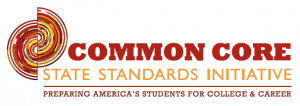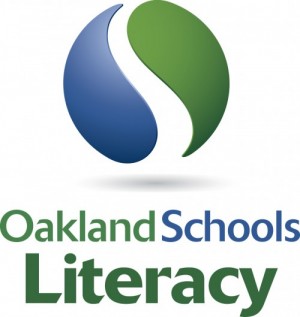 A few weeks ago I wrote about using the election in our classrooms. I said it was important to respect our students’ beliefs and try to keep our own political opinions out of the classroom. I suggested that focusing on skill development was key.
A few weeks ago I wrote about using the election in our classrooms. I said it was important to respect our students’ beliefs and try to keep our own political opinions out of the classroom. I suggested that focusing on skill development was key.
That was a lot easier before the election.
Now, after the election, I’m left wondering how to respond to my students. Some are upset and worrying about their futures in a country that doesn’t seem to value them. Others are excited and certain that now is the time America will finally rise to its full potential. It feels like focusing on skills would be artificial at best and probably just insensitive when they’re trying to process all of this.
As an adult who is highly engaged in political conversations, and as an educator who wants to help my students respond to this divisive election, what is my responsibility now? I still think it’s important to respect their beliefs and stay as neutral as possible, but tonight I’m wondering if focusing solely on skills is enough.
A Moment for Grit
Sometimes, answers pop up in incredibly unlikely places. Tonight, my answer, I think, is coming from Trolls. Not internet trolls–I’m talking about the fuzzy-haired singing ones in the recent Dreamworks movie. I took my four-year-old and seven-year-old to see Trolls last weekend, and throughout the whole movie, I kept thinking that the main character’s life perspective–keep trying, get back up again, etc.–was eerily reminiscent of a book pretty popular in education circles these days: Angela Duckworth’s Grit: The Power of Passion and Perseverance. As the main character sang her way through all kinds of problems and, ultimately, succeeded because of her grit, I chuckled to myself about the parallels. The cartoon was like a commercial for grit–just with glitter.
Truth be told, I’ve always been a little skeptical of the whole “grit” concept. It seems a little shallow to look at a student drowning in problems and say, “Hey! Keep tryin’, buddy!” But, really, what other choice do we have? We want our students to be resilient. We want our students to respond with relentless positive action when they are faced with challenges. And, regardless of whether you saw this election result as a positive or negative, there’s no denying that this election has been challenging. This has been a rough fight, arguments have turned personal and people on both sides are hurting.
So perhaps this is the time when Language Arts teachers ask our students to respond with a little grit. Perhaps our response needs to be: What is your response? If your side won, what do you think we need to do to move forward? If your side lost, how can you stay engaged in the process? If this whole thing left you totally disillusioned and disengaged, what can you do to get back in the game?
Tomorrow, my AP Lang. students are comparing two texts. One is a speech given by Booker T. Washington during the Reconstruction Era. He believed African Americans should “cast down their buckets” where they were. He wanted them to accept low- or no-skill jobs and work their way up slowly in society. Another text is by W.E.B. Dubois, responding to Washington’s suggestions. He had a totally different response: seek higher education, demand opportunities. We will examine those two responses to a complicated, contentious time. Both men responded to a challenging time not by throwing up their hands in despair or gleefully skipping off into the sunset. They dug into the challenge and offered a way forward.
After we study the texts, I think the question for my students will be an obvious one. In this contentious time, what will you do next? What is your way forward?
If we ignore the outcome of this election and hope it will go away or that time will heal the wounds in our country, we are missing an opportunity. Before the results, I thought we could zero in on skills and use politics as our base. I still think that works. But today I’m thinking that we need to see political topics as a challenge for our students as well. The Common Core State Standards require us to teach students to “Integrate multiple sources of information presented in diverse formats and media in order to make informed decisions and solve problems.” Focusing on skills helps with the informed decisions part, but giving them space to write, talk, and think about how to solve problems is key to helping all of us move forward.
 Hattie Maguire (@TeacherHattie) is an English teacher and Content Area Leader at Novi High School. She is spending her sixteenth year in the classroom teaching AP English Language and Composition, AP Seminar and doing Tier 2 writing intervention. She is a National Board Certified Teacher who earned her BS in English and MA in Curriculum and Teaching from Michigan State University.
Hattie Maguire (@TeacherHattie) is an English teacher and Content Area Leader at Novi High School. She is spending her sixteenth year in the classroom teaching AP English Language and Composition, AP Seminar and doing Tier 2 writing intervention. She is a National Board Certified Teacher who earned her BS in English and MA in Curriculum and Teaching from Michigan State University.

 On a road trip this summer, an old favorite track, Ice Cube’s “My Summer Vacation,” popped up on my shuffle. I immediately started ruminating about its amazing, subversive cultural commentary. The entire track plays out as a straightforward story of drug dealing and violence, until the final verse ends with the sudden revelation, “No parole or probation / Now this is a young man’s summer vacation / No chance for rehabilitation.” Every time I hear this final verse I react to it–I draw connections to research I’ve read, and I think of statistics about America’s youth. But mostly I react emotionally in exactly the way the song cleverly wants me to.
On a road trip this summer, an old favorite track, Ice Cube’s “My Summer Vacation,” popped up on my shuffle. I immediately started ruminating about its amazing, subversive cultural commentary. The entire track plays out as a straightforward story of drug dealing and violence, until the final verse ends with the sudden revelation, “No parole or probation / Now this is a young man’s summer vacation / No chance for rehabilitation.” Every time I hear this final verse I react to it–I draw connections to research I’ve read, and I think of statistics about America’s youth. But mostly I react emotionally in exactly the way the song cleverly wants me to. I’m prepared to be proven wrong. But I think shifting the focus of their low-stakes writing might result in much higher-quality results. A student who felt lost the whole time you read A Doll’s House, for instance, might bring the noise if you ask her to assess the gender stereotyping of The Bachelor or The Bachelorette.
I’m prepared to be proven wrong. But I think shifting the focus of their low-stakes writing might result in much higher-quality results. A student who felt lost the whole time you read A Doll’s House, for instance, might bring the noise if you ask her to assess the gender stereotyping of The Bachelor or The Bachelorette.


 uring the 2013-14 school year, the
uring the 2013-14 school year, the